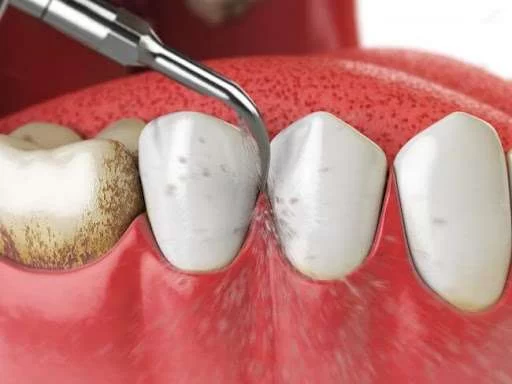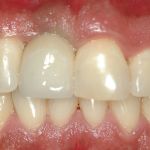
How to Know When You Need a Dental Cleaning versus Treatment
- 1. Understanding Dental Cleaning
- 2. How to Recognize the Need for a Dental Cleaning
- 3. Understanding Dental Treatment
- 4. Key Signs You Need Dental Treatment
- 5. Tips for Maintaining Good Oral Health
- 6. Conclusion: Maintaining Optimal Oral Health
1. Understanding Dental Cleaning
A dental cleaning, also known as prophylaxis, is a professional cleaning performed by a dentist or hygienist to remove plaque, tartar, and stains from your teeth. It helps prevent cavities, gum disease, and other oral health problems. This process is typically recommended every six months, but some individuals may need it more frequently depending on their oral hygiene habits and overall dental health.
The goal of dental cleaning is to maintain the health of your gums and teeth. It's a preventive measure rather than a treatment for an existing condition. If your last cleaning was over six months ago or you notice plaque buildup, it's time for a cleaning.
2. How to Recognize the Need for a Dental Cleaning
Several signs indicate that you may need a dental cleaning. These include:
- Visible plaque or tartar on your teeth.
- Bad breath or a persistent bad taste in your mouth.
- Bleeding gums when brushing or flossing.
- Gum recession or swollen gums.
If you notice any of these symptoms, it’s a good idea to schedule an appointment with your dentist to get a professional cleaning. Regular cleanings can help prevent more serious dental problems in the future.
3. Understanding Dental Treatment
Dental treatment involves procedures that are performed to address existing dental issues, such as cavities, infections, or gum disease. Unlike cleaning, which is preventive, dental treatment is aimed at correcting or managing problems that affect the health of your teeth or gums.
Common types of dental treatments include:
- Fillings for cavities
- Root canal therapy for infected teeth
- Scaling and root planing for gum disease
- Tooth extraction for severely damaged or infected teeth
Dental treatment is necessary when there is an active problem that requires professional intervention. It is important to note that if left untreated, dental problems can worsen over time, leading to more extensive treatments and higher costs.
4. Key Signs You Need Dental Treatment
Knowing when you need dental treatment is essential for maintaining your oral health. Some common signs that indicate the need for treatment include:
- Persistent tooth pain or sensitivity to hot or cold.
- Cracked, chipped, or broken teeth.
- Gum bleeding, inflammation, or infection.
- Visible cavities or tooth decay.
If you notice any of these symptoms, it's crucial to see a dentist promptly to avoid the problem from becoming more severe. Treatment can help save teeth, relieve pain, and restore your smile.
5. Tips for Maintaining Good Oral Health
In addition to regular dental cleanings and treatments, maintaining good oral hygiene is essential for preventing dental problems. Here are some simple tips:
- Brush your teeth twice a day with fluoride toothpaste.
- Floss daily to remove plaque from between your teeth.
- Limit sugary foods and drinks to reduce the risk of cavities.
- Visit your dentist regularly for checkups and cleanings.
By following these tips and staying proactive about your oral care, you can reduce the risk of needing extensive dental treatments in the future.
6. Conclusion: Maintaining Optimal Oral Health
In summary, knowing when you need a dental cleaning versus treatment can help you take the necessary steps to maintain optimal oral health. If you're unsure about whether you need a cleaning or treatment, it's always best to consult your dentist. Regular checkups and cleanings can prevent many common dental issues, while treatments address problems that arise. Take charge of your dental care today to keep your smile healthy and bright.
If you're looking for professional dental cleaning or treatment services, visit Dentistry Toothtruth for more information or to schedule an appointment.







 Colorado Springs Pediatric Dentistry South4.0 (163 review)
Colorado Springs Pediatric Dentistry South4.0 (163 review) Gentle Dental Norco4.0 (118 review)
Gentle Dental Norco4.0 (118 review) Michael E Krone & Associates5.0 (39 review)
Michael E Krone & Associates5.0 (39 review) Robert S. Radin, DDS4.0 (2 review)
Robert S. Radin, DDS4.0 (2 review) Eagan Dental Care4.0 (197 review)
Eagan Dental Care4.0 (197 review) Dr. David Miller DDS5.0 (1 review)
Dr. David Miller DDS5.0 (1 review) The Importance of Oral Health Education During Pregnancy for a Healthy Pregnancy
The Importance of Oral Health Education During Pregnancy for a Healthy Pregnancy Best Tips for Brushing Your Teeth Properly for Healthy Gums: Essential Techniques for Oral Health
Best Tips for Brushing Your Teeth Properly for Healthy Gums: Essential Techniques for Oral Health Why Skipping Dental Checkups Can Lead to Bigger Oral Health Problems
Why Skipping Dental Checkups Can Lead to Bigger Oral Health Problems Advantages of Porcelain Dental Restorations
Advantages of Porcelain Dental Restorations How Can Diabetes Cause Tooth and Gum Problems? Preventing and Managing Oral Health Issues
How Can Diabetes Cause Tooth and Gum Problems? Preventing and Managing Oral Health Issues Healthy Habits for Promoting Good Oral Health and Hygiene: Tips for a Healthy Smile
Healthy Habits for Promoting Good Oral Health and Hygiene: Tips for a Healthy Smile